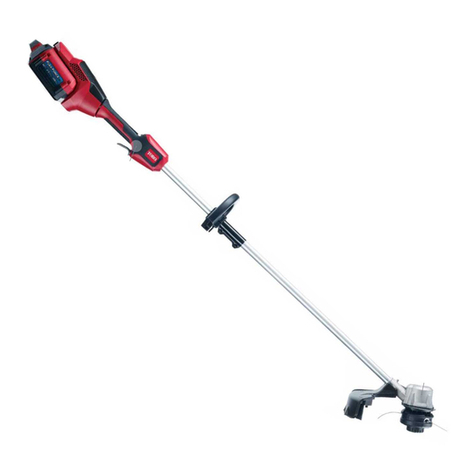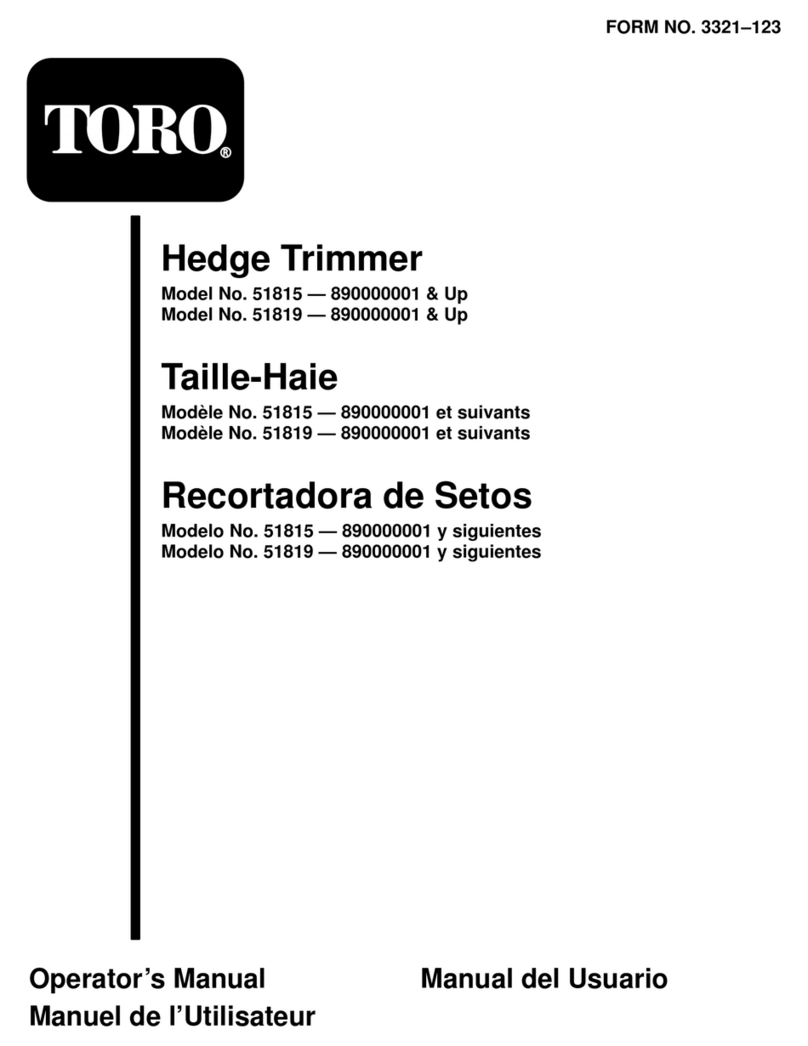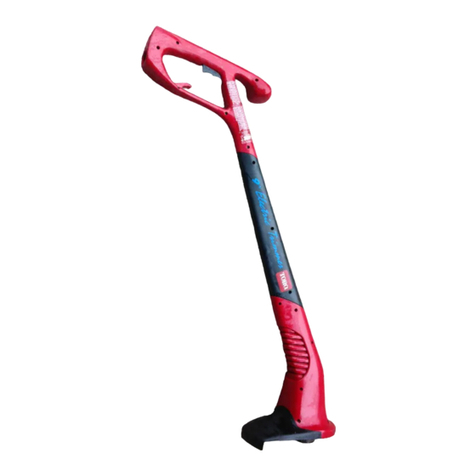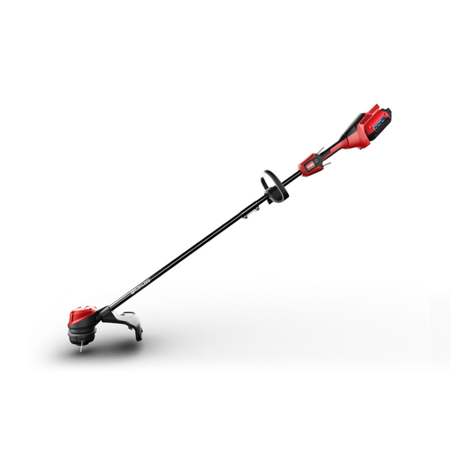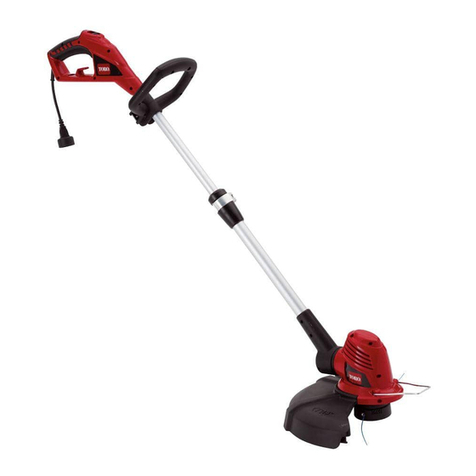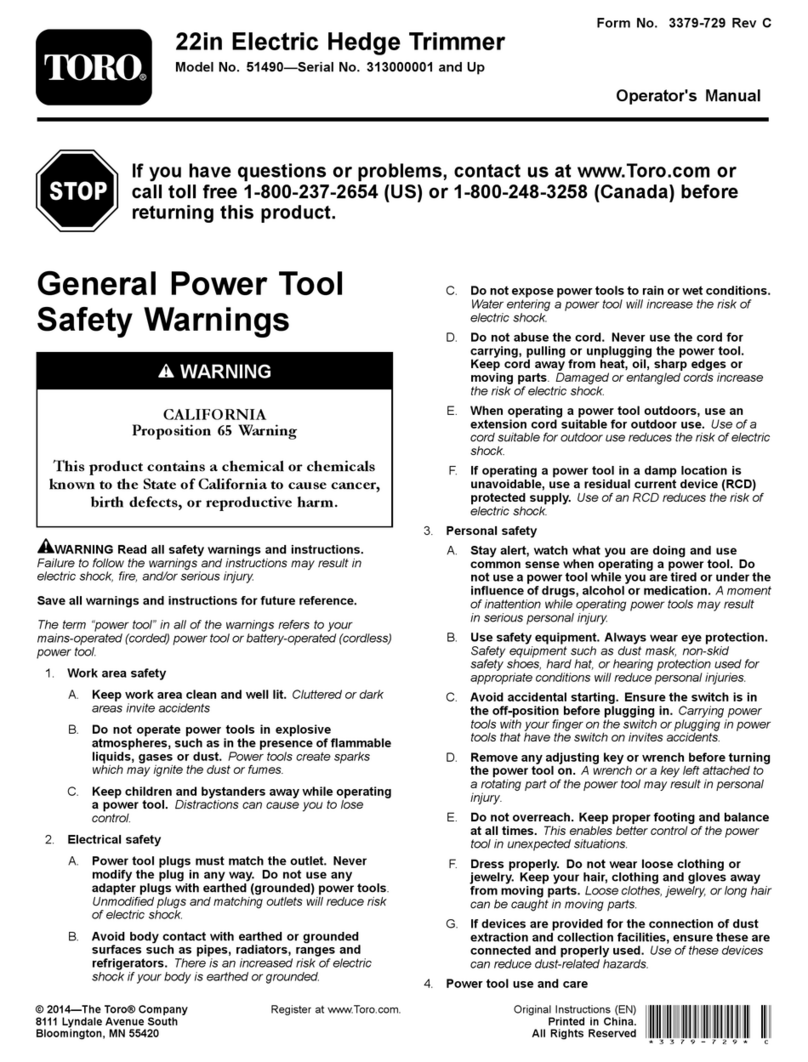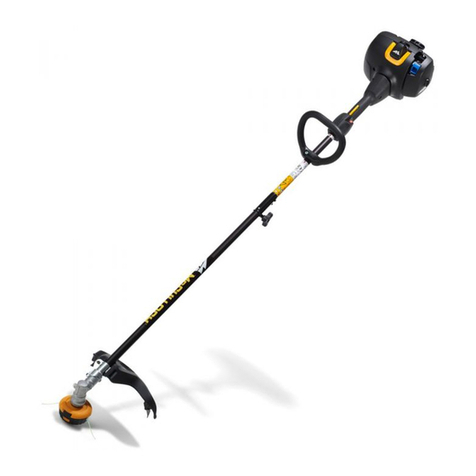
MAINTENANCE PROCEDURES
4. Start
the
engine and
let
it
warm up for approxi-
mately
3-5
minutes. Do not adjust the carburetor
when the engineis cold. The adjustments should
be made
at
thetemperatures
that
thetrimmer
will
beused. Allow the engine toidle. If neces-
sary, re-adjust the idlespeed to keep the engine
fromstalling
(3000-3500
RPM onthe TC400,
3000-4500on theTC300)
CAUTION:
DONOTRUNTHE TRIMMER
INDOORS WITHOUT ADEQUATE VENTILA-
TION.EXHAUST FUMES ARE POISONOUS
AND COULD BE DEADLY
IF
INHALED.
5.
With' theengine idling, slowly turn the lowspeed
screw
clockwise and note the position
at
which
theenginebeginstoslowdown.Nowturn
the
screw counterclockwise and again note the posi-
tion when the engine speed is reduced. Set the
screw at
a
pointmidwaybetweenthese two
positions.
6.
Hold
the
throttle wideopen and follow the same
procedure toset the highspeed screw.
7.
Re-checkthe idle adjustment.
8.
Install
the
air cleanercover.
TROUBLESHOOTING AND
TESTPROCEDURES
Generally, allgasoline-poweredproductsrequire
some form of service or repair during their lifetime.
The amount of time andexpense involved
in
repair-
ing
a
product canbe greatly impactedby the amount
of timerequiredtoinitiallydeterminethe cause of
the difficulty. Therefore,
it
is recommended tomake
these preliminary checks before proceeding to sec-
ondary troubleshootingprocedures.
Preliminary Checks
1. Check for ignition:
a. Check the start/stop switch position
2.
Check the spark plug:(refertospecifications.
Page
3)
a.
To ensure
the
correcttype
b. For damage to the insulator
c. For excessive carbon or burnt electrodes
d. For the correctgap
e.
Check for spark (refer to page
8)
3. Check
the
fuel supply:
a. Check the choke position
b. Check the conditionof the fuel, for freshness,
cleanliness, and proper mixture
4. Check the air cleaner: (refer topage
4)
a.For loose or damaged mounting screws
b.For dirtyfilterelements
c. For excessiveoil
in
the foam element
5.
Check cylindercompression(referto page
7)
Testing
Cylinder Compression
A compression test of the engine can provide vital
information on the general conditionof the working
parts within the engine. Thistest
will
indicate
a
worn
cylinder,piston, or ringandgenerallydetermine
whether
theengineissound or if
it
should be
replaced,.
Compression
Test
Procedure
1.
Install the compressiongauge into
the
sparkplug
hole.:IMPORTANT: Becertain that nomorethan
a
1/2”
of
the gauge is threaded into the cylinderas
damage to the pistonmay result (Fig. 14).
Figure 14
Compressiontesting
2.
Pull
the
starterropeseveral times to obtain the
highest possible compression reading.
3. If the compression reading is below
100
psi
(689
kPa),
cylinder,
piston, or ring damage should be
suspected If
so
damaged, a
new
engine
short-
block /shouldbe installed.
7



